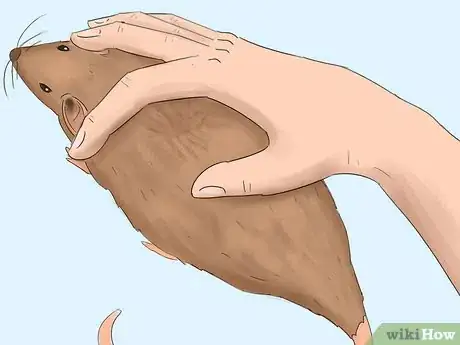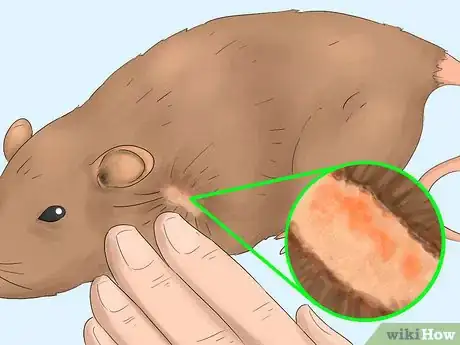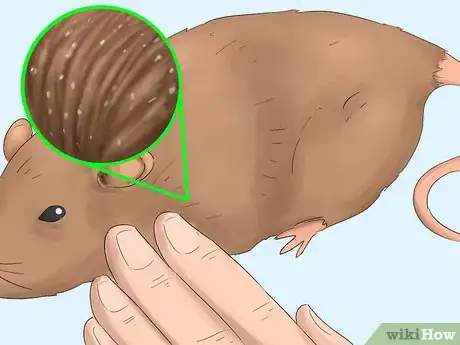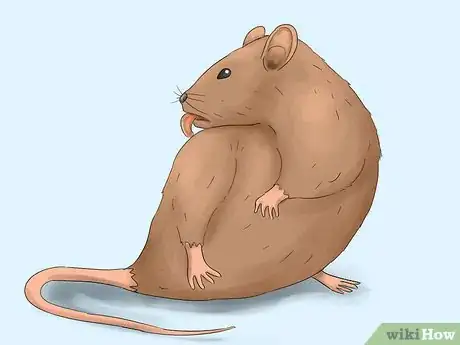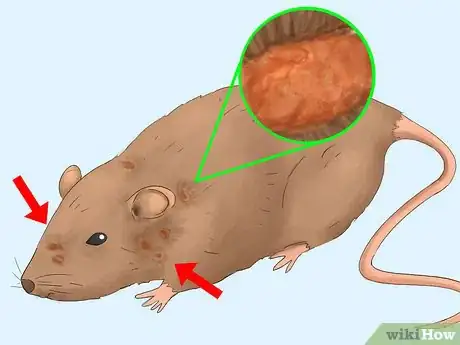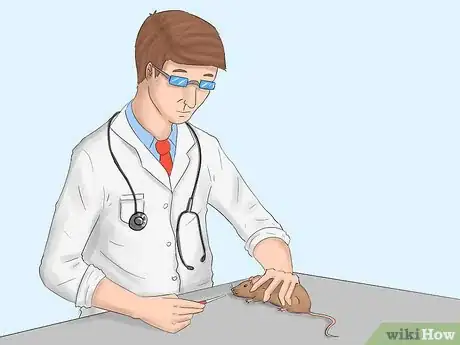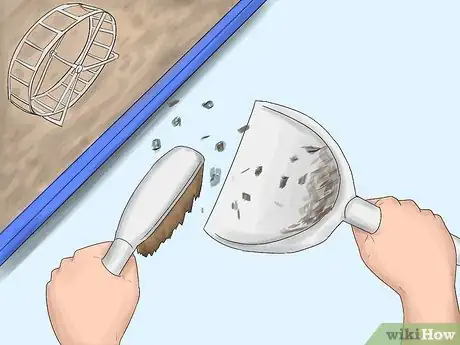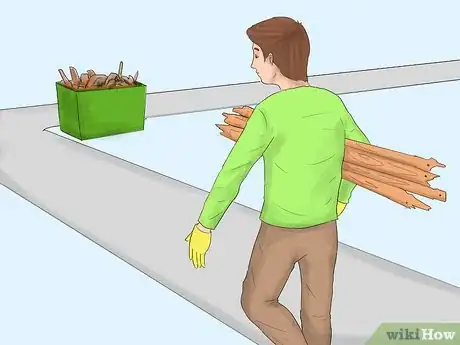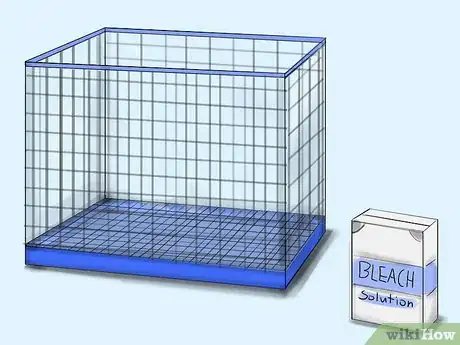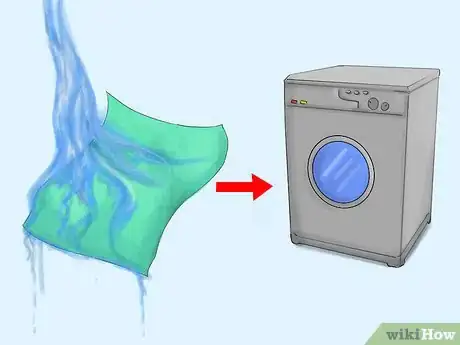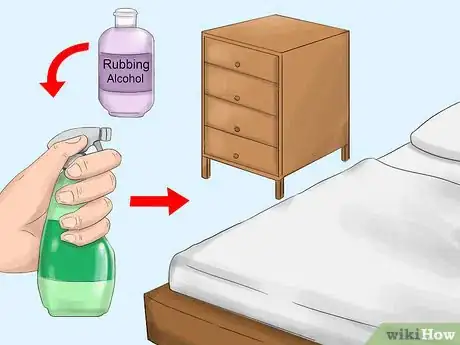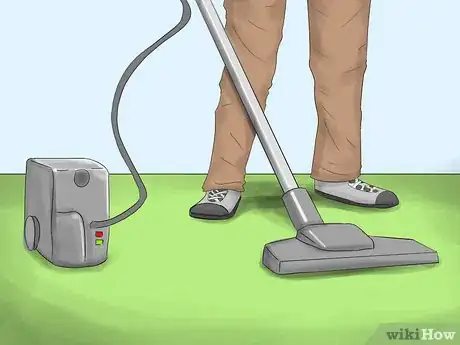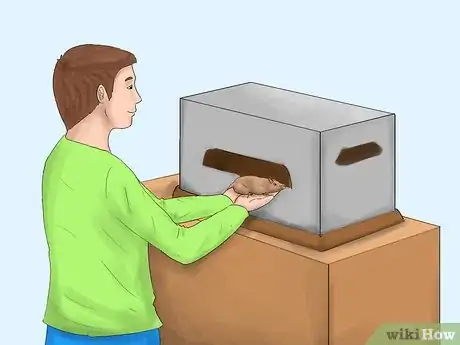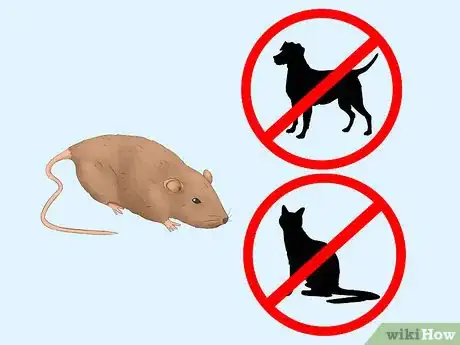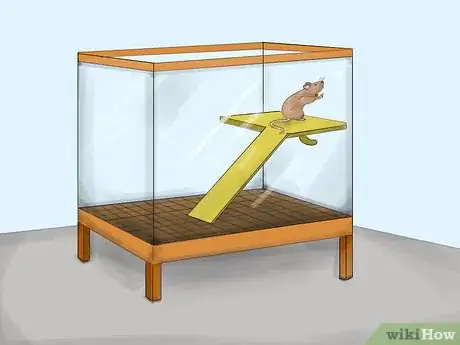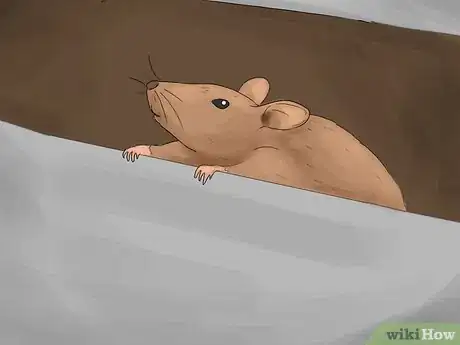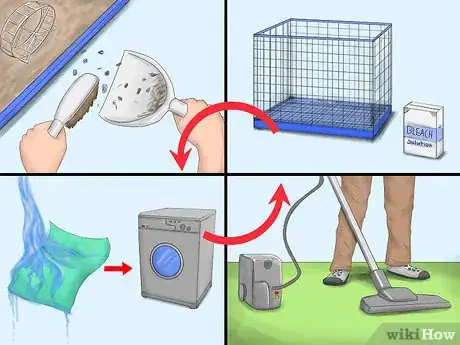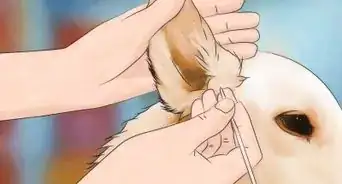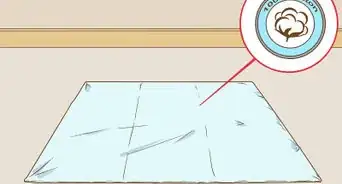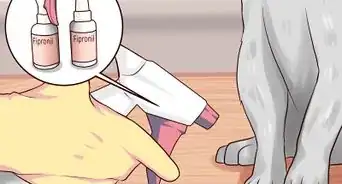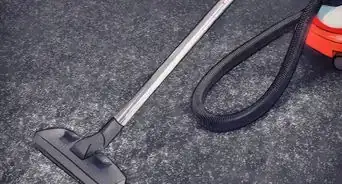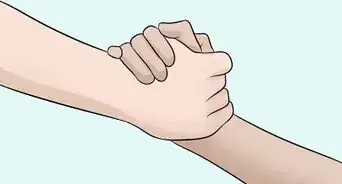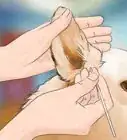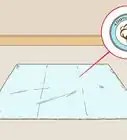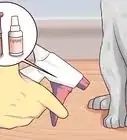X
wikiHow is a “wiki,” similar to Wikipedia, which means that many of our articles are co-written by multiple authors. To create this article, 13 people, some anonymous, worked to edit and improve it over time.
This article has been viewed 147,914 times.
Learn more...
If you've seen little bugs crawling around on your pet rats and a veterinarian has confirmed that they're tropical rat mites (Ornithonyssus bacoti) versus lice or other kinds of mites, you're going to have to follow these steps in order to get rid of these wretched parasites for good.
Steps
-
1Spot the symptoms. Given that mites are not blood sucking, there may be no obvious physical signs.[1] When signs do appear, they may include:[2]
- Inflammation of the skin
- White specks of dust on the rat's hair follicles (these are the mites and they may resemble ticks at first check)
- Intense itching
- Scabs around the shoulders, neck, and face.
-
2Get treatment from your vet. Nothing over-the-counter will work. The vet will most likely give you Ivermectin or Revolution, to be administered orally or by injection, several times over the next month. Your vet will advise you of the appropriate method of administering the treatment, dosage levels, and frequency of application.Advertisement
-
3Clean anything that can harbor the mites.[3] Do this 24 hours after the treatment is administered. The treatment will kill all the mites on the rats but will not kill mites or unhatched mite eggs in the rat's environment.
- Get rid of anything wooden. Such items are almost impossible to disinfect, and the mites can hide in the wood.
- Clean everything else with a bleach solution. This includes the rat's cage.
- Wash any fabrics in or around the cage, and put them in high heat in the dryer. Ideally, don't put any fabric in or near the cage while the rats are being treated.
- If you need to disinfect human areas such as beds and furniture, use rubbing alcohol (isopropyl alcohol) in a spray bottle. The benefit of using this is that it kills mites on contact but volatizes quickly.
- Other means for catching mites include sticky glue traps or clear sticky tape. Vacuuming is effective provided you dispose of the bag outside (or thoroughly clean a bagless version), or you can try vacuuming with a filter such as a handkerchief inserted into the vacuum tube and then transferred to a sealed tube or alcohol to kill the mites.
-
4Isolate the rats. Put them in a part of your home where they are least likely to come in contact with any mites in any stage of their life cycle.
- Keep them away from any other pets. These mites can live on other pets for about two weeks, but will die when they can't get to the rats. If there are any mites on your other pets and they come in contact with the rats, they'll just jump right back onto your rats and continue their life cycle. Ensure that other pets cannot get into the space where you're keeping the rats.
- It might be a good idea to keep your rats somewhere different than their usual spot (which might have mites hanging around) and somewhere without carpeting.
- Keep the rats isolated like this throughout their treatment period, until the mites are gone.
-
5Repeat the cleaning process again any time treatment is administered. Again, sanitize everything in and around the rat cage 24 hours after treatment is administered. This is to kill any remaining mites and eggs.
Advertisement
Community Q&A
-
QuestionDoes rubbing alcohol kill the mites and eggs?
 Community AnswerNo. Do not use rubbing alcohol as a treatment. Contact your vet for advice.
Community AnswerNo. Do not use rubbing alcohol as a treatment. Contact your vet for advice. -
QuestionWhat are the symptoms to tell if humans have rodent mites?
 Community AnswerAre you bleeding, vomiting and/or have diarrhea? If so, go to the doctor.
Community AnswerAre you bleeding, vomiting and/or have diarrhea? If so, go to the doctor. -
QuestionCan I rub coconut oil on my rat?
 Community AnswerNo. It can cause health issues and could be harmful.
Community AnswerNo. It can cause health issues and could be harmful.
Advertisement
Things You'll Need
- Medication from a vet
- Cleaning solution (bleach)
- New place to house your rats until the mites die out
References
- ↑ Merck and Merial, The Merck/Merial Manual for Pet Health, p.1010, (2007), ISBN 978-0-911910-99-5
- ↑ Merck and Merial, The Merck/Merial Manual for Pet Health, p.1010, (2007), ISBN 978-0-911910-99-5
- ↑ Merck and Merial, The Merck/Merial Manual for Pet Health, p.1010, (2007), ISBN 978-0-911910-99-5
- ↑ California Health and Human Services Agency, Tropical Rat and Northern Fowl Mites Face Sheet, http://www.cdph.ca.gov/HealthInfo/discond/Documents/MitesFactSheet2010.pdf
- ↑ California Health and Human Services Agency, Tropical Rat and Northern Fowl Mites Face Sheet, http://www.cdph.ca.gov/HealthInfo/discond/Documents/MitesFactSheet2010.pdf
About This Article
Advertisement
